
A Welshman in
Wyoming
A Welshman amongst the Indians in Wyoming
by Heulwen Jones of Old Colwyn
In 2008 whilst on holiday in Kansas and Wyoming USA, Bryan (my husband) and I and Bryan’s cousins, came across
an interesting story about a man from Dyserth.
We had been following the Oregon Trail with our American cousins. We started our journey from their home in
Newton, Kansas and went due North to Nebraska and joined Interstate 80 travelling westwards. This route took us
along the Platte River Valley in Nebraska.
We stopped the first night in Ogallala, Nebraska and in the morning we left Interstate 80 and headed north west on
Highway 26.
At Guernsey, Wyoming the ruts that the wagons on the Oregon Trail had made in the rocks on their epic Journey from
Independence, Missouri to Oregon were quite visible. We continued northwest past Fort Laramie until we got to
Casper, Wyoming where we stayed the night.
In the morning we left Casper and motored westwards to Lander where we stopped for lunch. We then went
Northwards to go to Dubois where we were to stay. After leaving Lander we entered the Wind River Reservation,
where the Shoshone Indians settled on the West side and the Arapahoe’s on the eastern side.
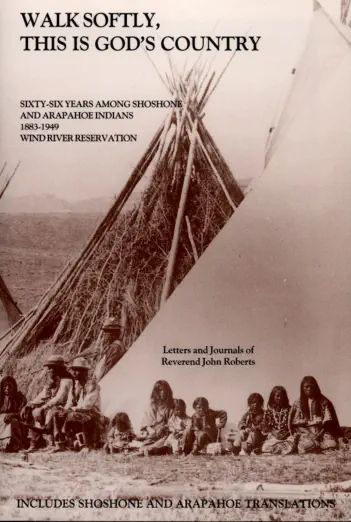
Reverend John Roberts 1853 - 1949
We stopped at a trading post in Fort Washakie and cousin Jane picked up a book called “Walk Softly this is God’s
Country” journals and letters of the Reverend John Roberts. Jane decided to buy the book as she is interested in
History and works part time at the Archives in Newton.
We had a look around the area which was full of Indian History. We then travelled on to Dubois and up Union Pass to
their cabin. At an altitude 8,000 feet, we had wonderful views.
Later that evening I had a look at Jane’s book. The first chapter mentions that a John Roberts was born in 1853 some
2 miles east of Rhuddlan at a place called “Llewllyd.“ That fired my imagination and I had to write his story.
After further research, here is that story:-
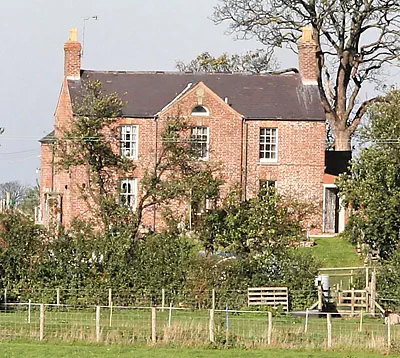
John Roberts was born at Llewerllyd
Farm, Dyserth, on March 31st,
1853. Son of Robert Roberts and
Elinor (nee Roberts).
Llewerllyd Farm, Dyserth. Photo taken in
2005. Since 2001 it has been the home of
Pet Rescue Welfare Association. It also has
a fund-raising campsite, still active in
2024.
Until 1974 Dyserth was in Flintshire.Then in
Clwyd until 1996, and since then is in
Denbighshire.

No census available for 1861 for this area. His birth certificate proves that he was born there.
He was educated at Rhuthun Grammar School and he was still there on the 1871 census age 18. He then went to St David’s
College, Lampeter which was then was affiliated to Oxford University. He graduated with a BA in 1876. In 1878 he was
ordained to the Deaconate by the Right Reverend George Augustus Selwyn in Lichfield Cathedral.
For a short time he was a curate at Dawley Magna in Shropshire. From there he went to the Bahamas Islands 1878. At
Nassau he was ordained to the priesthood by the Right Rev Francis Cramer Roberts and was made chaplain of St Matthew
Cathedral, he also worked hard amongst the coloured people especially in the leper colonies.
Although this work was hard, this is not what he wanted in his career. The people of the islands were Christians and he
sought a much greater challenge. However during this time he met his future wife who was organist at the cathedral (more
about this later).
Two years later he sailed for New York, where he applied for the mission he always wanted “To minister to the American
Indians” in New York, Roberts asked Bishop John Spalding of Wyoming and Colorado for missionary work in your most difficult
field. He was told, you can go to the Shoshone and Bannock Indian Agency in Wyoming Territory. Years later it became known
as the Wind River Indian Reservation.
Firstly Bishop Spalding sent John Roberts to Greeley Colorado and then on to Pueblo to work amongst the coal miners. At
Pueblo he was appointed rector of Trinity Church and in 1882 established Trinity mission in South Pueblo. Whilst there, an
outbreak of small pox occurred. For several weeks he had to work at the hospital as they were all quarantined.
On February 1
st
1883 he left Pueblo by train and travelled via Cheyenne to his new destination Green River Wyoming. On the
2
nd
February the Stage coach could not leave Green River for the Shoshone and Bannock Indian Agency because of a ferocious
blizzard. The agency was 150 miles away.
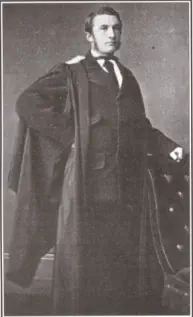
John Roberts c1874,
taken in the Bahamas
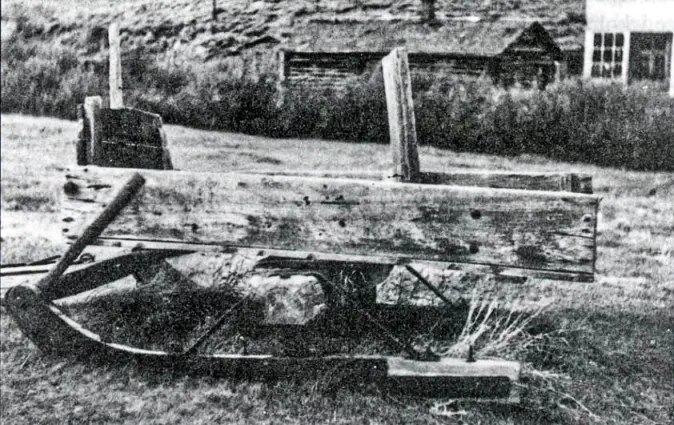
Freight, mail & passenger sled similar to the one used by Roberts in 1883
But of course the mail had to be delivered. Four horses were
harnessed to a big dry goods box on runners. Hay was spread
on the floor of the box.
The driver was almost ready to go when he noticed a young
man with his dog. The man told the driver that he wanted to
go as soon as possible. His name was John Roberts.
They had a terrible journey and it took them 8 days instead of
36 hours. It was difficult to find the stage stations because of
the high drifts and they were about 15 to 20 miles apart. John
kept warm by shovelling snow.
The temperature at Fort Washakie registered at 60 degrees
below zero (Farenheit), when the exhausted party arrived.
John Roberts soon settled to a very primitive way of life. The Indians were very poor and he was kept very busy with the two tribes on the Reservation. The Shoshones
were mountain Indians and the Arapahoe were Plains Indians and they were not very friendly towards each other Fort Washakie was about 20 miles from where the
Arapahoe’s lived. The Shoshones were settled around Fort Washakie.
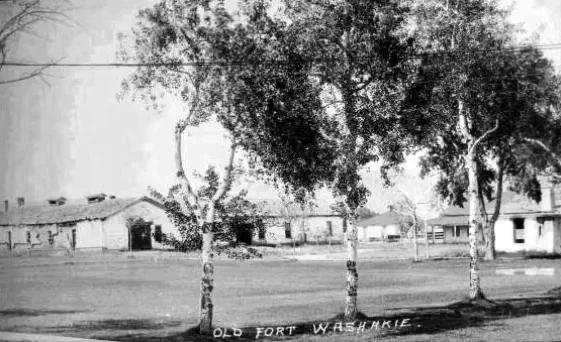
Fort Washakie, date unknown.
He gradually gained their confidence by his good deeds. He learned both their
languages and wrote down their vocabulary which is printed in the back of the
book.
Unlike many other missionaries Roberts was concerned that the Indians retained
their culture, identity and languages, at the same time preparing them to cope
with the modern developing world around them. He also wrote about the many
characters he came to know and love during the course of his work.
It took several years before Christian burials
became the norm. Chief Washakie (Chief of the
Shoshone tribe) was quite a character and
changed his religion several times.
In 1887 he gave John Roberts 160 acres of
land to build a mission school and house
about 2 miles from the Fort. The
government had already given money for an
industrial school near the Fort, but no
furniture. The boys were to be taught to
make furniture for the school.
He sent begging letters to all the people he
knew who he hoped would sponsor his
project. He built a large house of bricks,
made on site which looked very similar to
the farm house where he was born in
Dyserth. The house was large enough to
take in borders mainly Shoshone and
Arapahoe girls.

Chief Washakie c1833/35

Shoshone Mission School near Fort Washakie, c1906.
Photos from www.wyomingtalesandtrails.com/wash.html
During his first year he sent a letter to his fiancée Laura Alice Brown
in faraway Bahamas telling her that under no circumstances was
she to follow him out to Wyoming.
The winters were atrocious and she would not survive the primitive
conditions out there. She was from a wealthy family in Nassau and
had been used to servants and private tutors.
She wrote back and said she was coming and would arrive at the
end of the year.
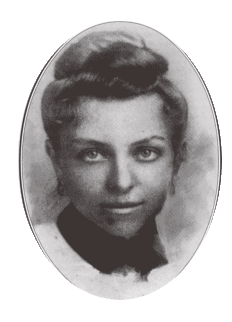
At the age of 19 she travelled 5,000 miles via Liverpool and New
York and as far as Rawlins, Wyoming, the nearest railway stop to
the Reservation.
Roberts had to guess as to her date of arrival at Rawlins. He left
the Fort on December 24
th
by stage coach and arrived on the 25
th
in the afternoon.
Laura had arrived that morning. It had been 3 years since they
had seen each other and at first she did not recognise him under
his large buffalo hide coat.
Laura Alice Roberts, Neé Brown, 1887
They were married at 4pm that day and it was the first wedding at the new St Thomas Episcopal Church. They were strangers in town but the Church was full and the
congregation wished them well in their new life together.
They left the next day for the two day trip to the Reservation. They rested for day at Lander before finishing their journey.
For a few years they lived in a tiny cabin until they moved to the Mission House where they lived in 2 small rooms. She supported her husband well in all that he did but
was very lonely at times as he was often away.
She lost her first child a boy who only lived a few hours.. He is buried in the Military cemetery at the Fort. She had 5 other children, Eleanor, Gwen, Marion and Gladys
and 1 son Edward. All the children became fluent in both the Indian languages and were taught alongside the native children.
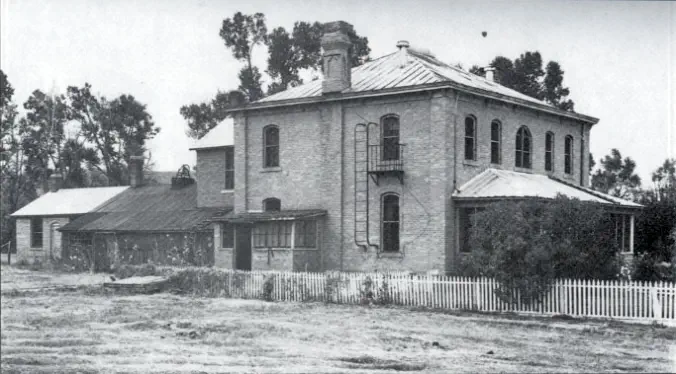
Shoshone Episcopal Mission School, Trout Creek
John Roberts established Churches in Lander, Milford, Dubois,
Thermopolis, Hudson, Riverton, Ethete, and held services in Atlantic
City, Lyons Valley, South Pass to name but a few.
Chief Washakie is also buried in the Military cemetery. He died in
1900 at about the age of 100 years old and was very helpful in the
first few years of John Roberts’ mission. It is said that he is the only
Indian chief to have had a military funeral and was held in high
esteem by the soldiers at the Fort. The Rev. Roberts officiated at his
funeral.

The second year he was at the Fort he was asked to go and see a very old Indian woman
whom he was told was Sacajawea.
She had been a translator and guide to the Lewis and Clark Expedition of 1803-6, who found
the route from the east of the USA to the Pacific. She was also about 100 years old.
On April 9th 1884 Sacajawea died and her burial was officiated by John Roberts.
She is buried in a cemetery about 2 miles from the Fort near where the mission house was to
be built.
A large headstone was erected many years later and it is visited often by tourists.
There is a much controversy about Sacagawea’s burial site, as several States claim her, but
they are fairly certain that this is her resting place as she knew many things about the
Expedition that nobody else would know.
© Heulwen Jones 2008
John Roberts was given several honours for his pioneering work and his untiring efforts in teaching. In 1932 he was awarded a Doctorate of Laws in Wyoming and a
Doctorate of Divinty at Evanston, Illinois. In 1933 in both Mr and Mrs Roberts honour the flag of Wyoming was presented to the great choir of the National Cathedral in
Washington.
All his papers and letters had been collected by his daughter Eleanor after his death in 1949. She typed all his papers which was quite a task as he had written
everything in old English script. She put them altogether in a rough draft and placed them for safekeeping at the Western History archives at Wyoming University.
In 1997 Dr Sharon Kahin came across the papers and contacted Beatrice Crofts, Eleanor’s daughter and together they were awarded a grant to publish the book.
Beatrice added her own reminiscence about her childhood on the Reservation and staying with her grandparents. I tried to contact her but found by now she is very
frail and back on the Reservation in a Nursing Home. I was able to contact her daughter Mary Young who lives in Lander and she gave me permission to write this
story. John Roberts and Laura are both buried in Lander with some of their children buried around them. (See Footnote).

The Reverend John Roberts with students at the Mission School, approx. 1906. Picture from
www.wyomingtalesandtrails.com/wash.html
I saw the Mission house last year but unfortunately it is in a
poor state and the bricks are falling away from the gable ends.
Mary states that it is because of the inferior bricks. Llewerllyd,
built in 1783, is in good condition and still lived in.
I am sure he would have been pleased that the farm is now a
Pet Sanctuary. I tried to contact Rhuthun (Ruthin) Grammar
School, but got no response.
He also had a sister Sarah 2 years younger and I found her in
London working as a Professional nurse on the 1881 census. It
would be nice to find out if she married and had children.
Heulwen Jones 2009
Footnote:- From
Rt. Rev. Leo J. Michael,
Bishop Ordinary, Diocese of Holy Trinity & Great Plains.St. James Anglican Church in Kansas City, Missouri
Beatrice Noel Croft the author of the book 'Walk Softly, This is God's Country', passed away on February 20, 2011 at Fort Washakie, Wyoming. She was a
founding member of our Church of St. John in Lander, Wyoming, which is under the care of Bishop Kenneth Kinner, who is the bishop of the Missionary Jurisdiction
of American Indian People. Bishop Kinner had officiated at her funeral on Feb 25th 2011 A.D.
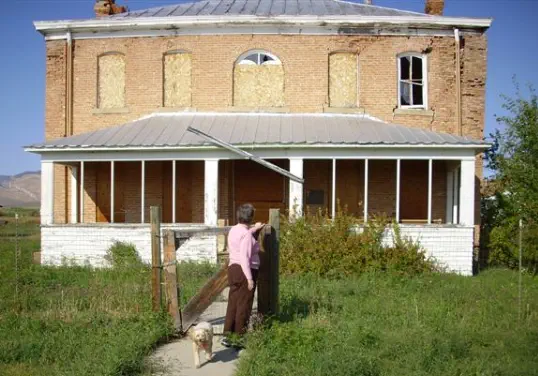
© Heulwen Jones 2008
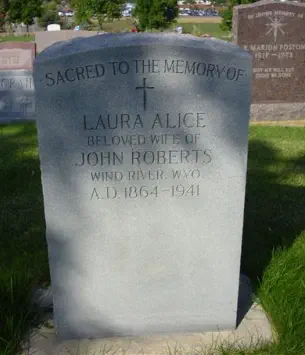
© Heulwen Jones 2008
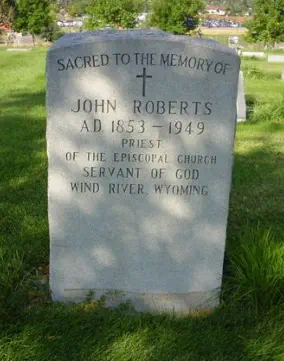
© Heulwen Jones 2008

© Heulwen Jones 2008
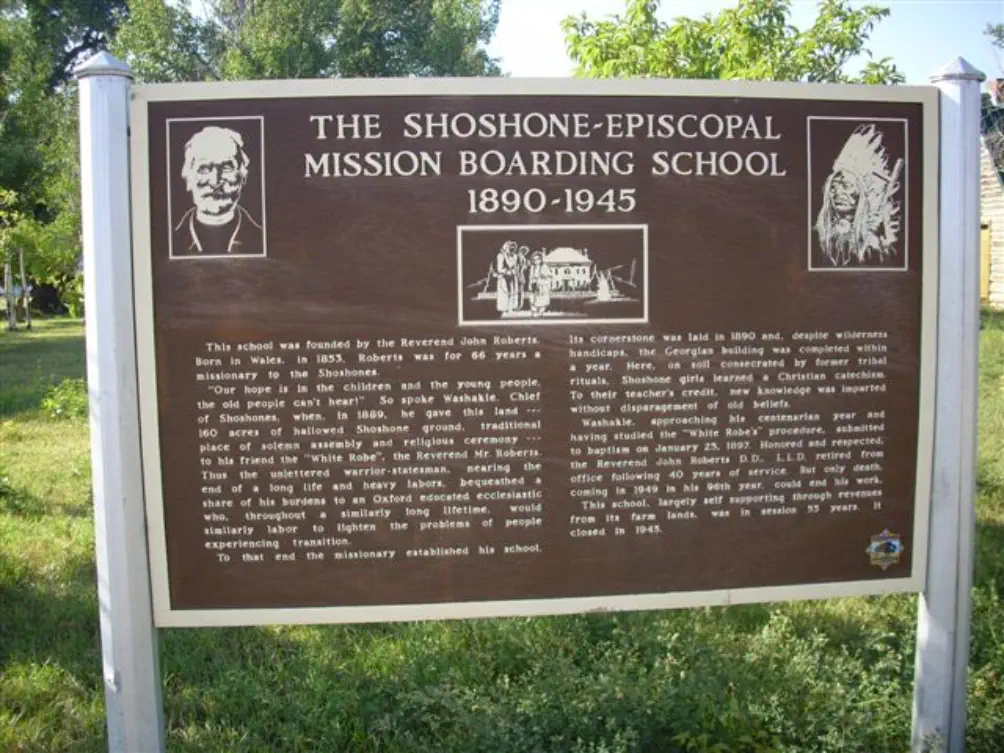
© Heulwen Jones 2008

A Welshman in
Wyoming
A Welshman amongst the Indians in Wyoming
by Heulwen Jones of Old Colwyn
In 2008 whilst on holiday in Kansas and Wyoming USA,
Bryan (my husband) and I and Bryan’s cousins, came across
an interesting story about a man from Dyserth.
We had been following the Oregon Trail with our American
cousins. We started our journey from their home in Newton,
Kansas and went due North to Nebraska and joined
Interstate 80 travelling westwards. This route took us along
the Platte River Valley in Nebraska.
We stopped the first night in Ogallala, Nebraska and in the
morning we left Interstate 80 and headed north west on
Highway 26.
At Guernsey, Wyoming the ruts that the wagons on the
Oregon Trail had made in the rocks on their epic Journey
from Independence, Missouri to Oregon were quite visible.
We continued northwest past Fort Laramie until we got to
Casper, Wyoming where we stayed the night.
In the morning we left Casper and motored westwards to
Lander where we stopped for lunch. We then went
Northwards to go to Dubois where we were to stay. After
leaving Lander we entered the Wind River Reservation,
where the Shoshone Indians settled on the West side and
the Arapahoe’s on the eastern side.

We stopped at a trading post in Fort Washakie and cousin
Jane picked up a book called “Walk Softly this is God’s
Country” journals and letters of the Reverend John Roberts.
Jane decided to buy the book as she is interested in History
and works part time at the Archives in Newton.
We had a look around the area which was full of Indian
History. We then travelled on to Dubois and up Union Pass to
their cabin. At an altitude 8,000 feet, we had wonderful
views.
Later that evening I had a look at Jane’s book. The first
chapter mentions that a John Roberts was born in 1853
some 2 miles east of Rhuddlan at a place called “Llewllyd.“
That fired my imagination and I had to write his story.
After further research, here is that story:-
Reverend John Roberts 1853 - 1949
No census available for 1861 for this area. His birth
certificate proves that he was born there.
John Roberts was born at Llewerllyd Farm, Dyserth, on
March 31st, 1853. Son of Robert Roberts and Elinor (nee
Roberts).

Llewerllyd Farm, Dyserth. Photo taken in 2005. Since 2001 it
has been the home of Pet Rescue Welfare Association. It also
has a fund-raising campsite, still active in 2024.
Until 1974 Dyserth was in Flintshire.Then in Clwyd until 1996,
and since then is in Denbighshire.

He was educated at Rhuthun
Grammar School and he was
still there on the 1871 census
age 18. He then went to St
David’s College, Lampeter which
was then was affiliated to
Oxford University. He graduated
with a BA in 1876. In 1878 he
was ordained to the Deaconate
by the Right Reverend George
Augustus Selwyn in Lichfield
Cathedral.
For a short time he was a
curate at Dawley Magna in
Shropshire. From there he went
to the Bahamas Islands 1878.
At Nassau he was ordained to
the priesthood by the Right Rev Francis Cramer Roberts and
was made chaplain of St Matthew Cathedral, he also worked
hard amongst the coloured people especially in the leper
colonies.
Although this work was hard, this is not what he wanted
in his career. The people of the islands were Christians and
he sought a much greater challenge. However during this
time he met his future wife who was organist at the
cathedral (more about this later).
Two years later he sailed for New York, where he applied
for the mission he always wanted “To minister to the
American Indians” in New York, Roberts asked Bishop John
Spalding of Wyoming and Colorado for missionary work in
your most difficult field. He was told, you can go to the
Shoshone and Bannock Indian Agency in Wyoming Territory.
Years later it became known as the Wind River Indian
Reservation.
Firstly Bishop Spalding sent John Roberts to Greeley
Colorado and then on to Pueblo to work amongst the coal
miners. At Pueblo he was appointed rector of Trinity Church
and in 1882 established Trinity mission in South Pueblo.
Whilst there, an outbreak of small pox occurred. For several
weeks he had to work at the hospital as they were all
quarantined.
On February 1
st
1883 he left Pueblo by train and travelled
via Cheyenne to his new destination Green River Wyoming.
On the 2
nd
February the Stage coach could not leave Green
River for the Shoshone and Bannock Indian Agency because
of a ferocious blizzard. The agency was 150 miles away.

John Roberts c1874,
taken in the Bahamas
But of course the mail had to be delivered. Four horses were
harnessed to a big dry goods box on runners. Hay was
spread on the floor of the box.
The driver was almost ready to go when he noticed a young
man with his dog. The man told the driver that he wanted to
go as soon as possible. His name was John Roberts.
They had a terrible journey and it took them 8 days instead
of 36 hours. It was difficult to find the stage stations
because of the high drifts and they were about 15 to 20
miles apart. John kept warm by shovelling snow.
The temperature at Fort Washakie registered at 60 degrees
below zero (Farenheit), when the exhausted party arrived.

Freight, mail & passenger sled similar to the one used by Roberts in 1883
John Roberts soon settled to a very primitive way of life. The
Indians were very poor and he was kept very busy with the
two tribes on the Reservation. The Shoshones were
mountain Indians and the Arapahoe were Plains Indians and
they were not very friendly towards each other Fort
Washakie was about 20 miles from where the Arapahoe’s
lived. The Shoshones were settled around Fort Washakie.
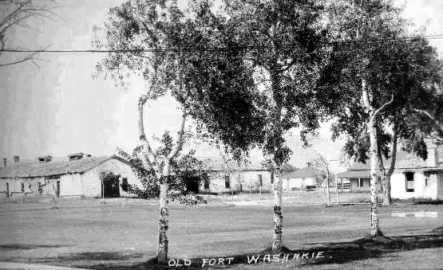
Fort Washakie, date unknown.
He gradually gained their confidence by his good deeds. He
learned both their languages and wrote down their
vocabulary which is printed in the back of the book.
Unlike many other missionaries Roberts was concerned that
the Indians retained their culture, identity and languages, at
the same time preparing them to cope with the modern
developing world around them. He also wrote about the
many characters he came to know and love during the
course of his work.
It took several years before Christian
burials became the norm. Chief
Washakie (Chief of the
Shoshone tribe) was quite a
character and changed his
religion several times.
In 1887 he gave John
Roberts 160 acres of land to
build a mission school and
house about 2 miles from
the Fort. The government
had already given money
for an industrial school
near the Fort, but no
furniture. The boys were to
be taught to make furniture
for the school.
He sent begging letters to all the people he knew who he
hoped would sponsor his project. He built a large house of
bricks, made on site which looked very similar to the farm
house where he was born in Dyserth. The house was large
enough to take in borders mainly Shoshone and Arapahoe
girls.

Chief Washakie
c1833/35

Shoshone Mission School near Fort Washakie, c1906.
Photos from www.wyomingtalesandtrails.com/wash.html
During his first year he sent a letter to his fiancée Laura
Alice Brown in faraway Bahamas telling her that under no
circumstances was she to follow him out to Wyoming.
The winters were atrocious and she would not survive the
primitive conditions out there. She was from a wealthy
family in Nassau and had been used to servants and private
tutors.
She wrote back and said she was coming and would arrive at
the end of the year.
At the age of 19 she travelled 5,000
miles via Liverpool and New York and
as far as Rawlins, Wyoming, the
nearest railway stop to the
Reservation.
Roberts had to guess as to her date
of arrival at Rawlins. He left the Fort
on December 24
th
by stage coach and
arrived on the 25
th
in the afternoon.
Laura had arrived that morning. It had been
3 years since they had seen each other and at first she
did not recognise him under his large buffalo hide coat.
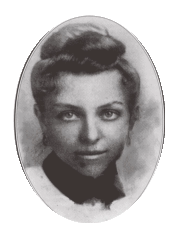
Photo - Laura Alice Roberts, Neé Brown, 1887
They were married at 4pm that day and it was the first
wedding at the new St Thomas Episcopal Church. They were
strangers in town but the Church was full and the
congregation wished them well in their new life together.
They left the next day for the two day trip to the
Reservation. They rested for day at Lander before finishing
their journey.
For a few years they lived in a tiny cabin until they moved to
the Mission House where they lived in 2 small rooms. She
supported her husband well in all that he did but was very
lonely at times as he was often away.
She lost her first child a boy who only lived a few hours.. He
is buried in the Military cemetery at the Fort. She had 5 other
children, Eleanor, Gwen, Marion and Gladys and 1 son
Edward. All the children became fluent in both the Indian
languages and were taught alongside the native children.

Shoshone Episcopal Mission School, Trout Creek
John Roberts established Churches in Lander, Milford, Dubois,
Thermopolis, Hudson, Riverton, Ethete, and held services in
Atlantic City, Lyons Valley, South Pass to name but a few.
Chief Washakie is also buried in the Military cemetery. He
died in 1900 at about the age of 100 years old and was very
helpful in the first few years of John Roberts’ mission. It is
said that he is the only Indian chief to have had a military
funeral and was held in high esteem by the soldiers at the
Fort. The Rev. Roberts officiated at his funeral.
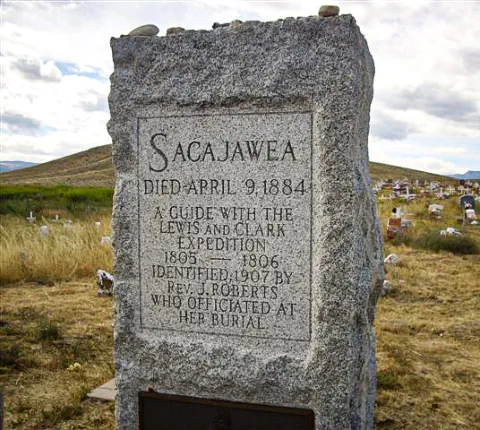
The second year he was at the Fort he was asked to go and
see a very old Indian woman whom he was told was
Sacajawea.
She had been a translator and guide to the Lewis and Clark
Expedition of 1803-6, who found the route from the east of
the USA to the Pacific. She was also about 100 years old.
On April 9th 1884 Sacajawea died and her burial was
officiated by John Roberts.
She is buried in a cemetery about 2 miles from the Fort near
where the mission house was to be built.
A large headstone was erected many years later and it is
visited often by tourists.
There is a much controversy about Sacagawea’s burial site,
as several States claim her, but they are fairly certain that
this is her resting place as she knew many things about the
Expedition that nobody else would know.
John Roberts was given several honours for his pioneering
work and his untiring efforts in teaching. In 1932 he was
awarded a Doctorate of Laws in Wyoming and a Doctorate of
Divinty at Evanston, Illinois. In 1933 in both Mr and Mrs
Roberts honour the flag of Wyoming was presented to the
great choir of the National Cathedral in Washington.
All his papers and letters had been collected by his daughter
Eleanor after his death in 1949. She typed all his papers
which was quite a task as he had written everything in old
English script. She put them altogether in a rough draft and
placed them for safekeeping at the Western History archives
at Wyoming University.
In 1997 Dr Sharon Kahin came across the papers and
contacted Beatrice Crofts, Eleanor’s daughter and together
they were awarded a grant to publish the book. Beatrice
added her own reminiscence about her childhood on the
Reservation and staying with her grandparents. I tried to
contact her but found by now she is very frail and back on
the Reservation in a Nursing Home. I was able to contact her
daughter Mary Young who lives in Lander and she gave me
permission to write this story. John Roberts and Laura are
both buried in Lander with some of their children buried
around them. (See Footnote).

The Reverend John Roberts with students at the
Mission School, approx. 1906. Picture from
www.wyomingtalesandtrails.com/wash.html
I saw the Mission house last year but unfortunately it is in a
poor state and the bricks are falling away from the gable
ends.
Mary states that it is because of the inferior bricks.
Llewerllyd, built in 1783, is in good condition and still lived
in.
I am sure he would have been pleased that the farm is now
a Pet Sanctuary. I tried to contact Rhuthun (Ruthin)
Grammar School, but got no response.
He also had a sister Sarah 2 years younger and I found her
in London working as a Professional nurse on the 1881
census. It would be nice to find out if she married and had
children.
Heulwen Jones 2009
Footnote:- From
Rt. Rev. Leo J. Michael,
Bishop Ordinary, Diocese of Holy Trinity & Great Plains.St.
James Anglican Church in Kansas City, Missouri
Beatrice Noel Croft the author of the book 'Walk Softly, This
is God's Country', passed away on February 20, 2011 at Fort
Washakie, Wyoming. She was a founding member of our
Church of St. John in Lander, Wyoming, which is under the
care of Bishop Kenneth Kinner, who is the bishop of the
Missionary Jurisdiction of American Indian People. Bishop
Kinner had officiated at her funeral on Feb 25th 2011 A.D.
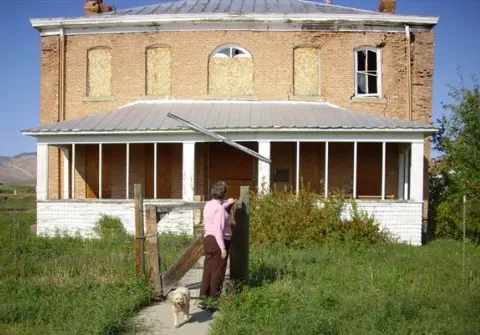
© Heulwen Jones 2008

© Heulwen Jones 2008
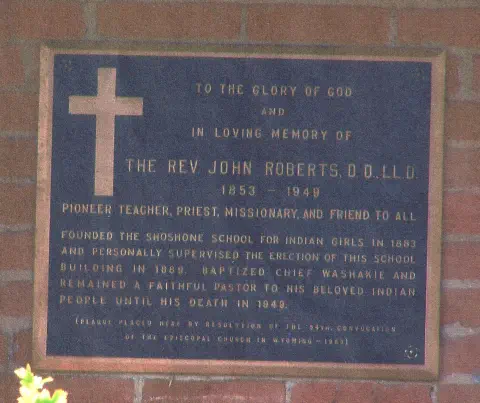
© Heulwen Jones 2008

© Heulwen Jones 2008

© Heulwen Jones 2008



























































































































